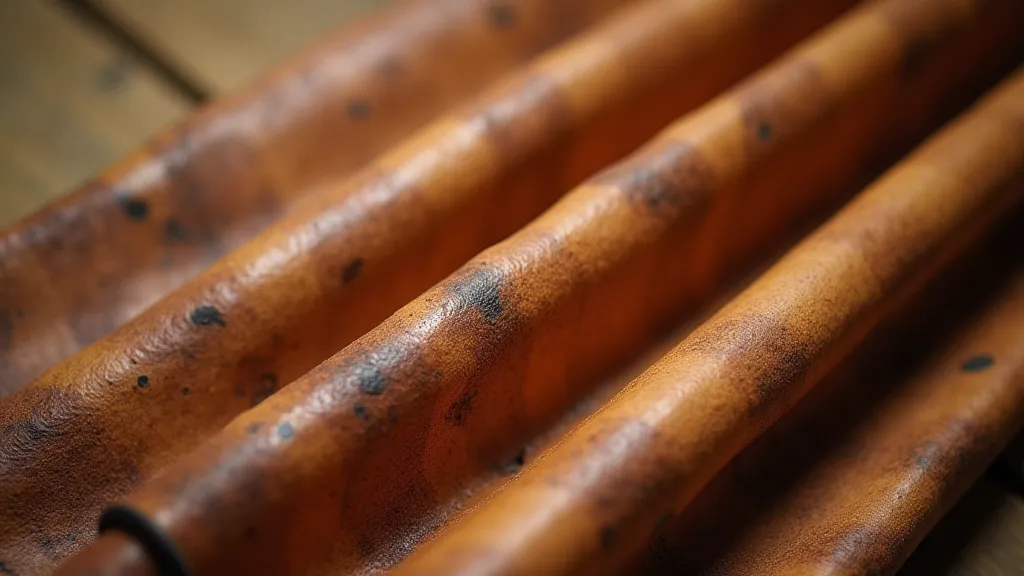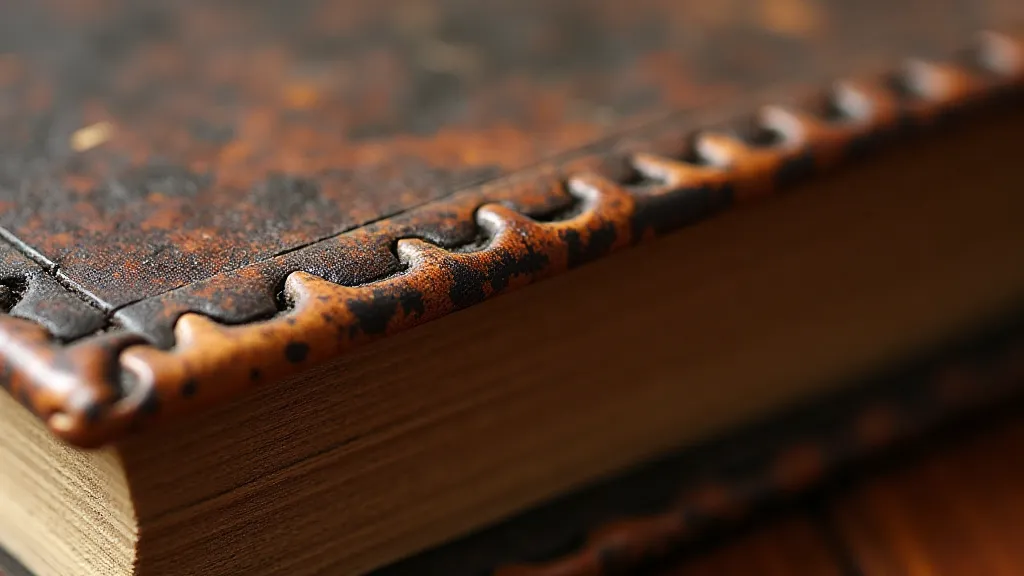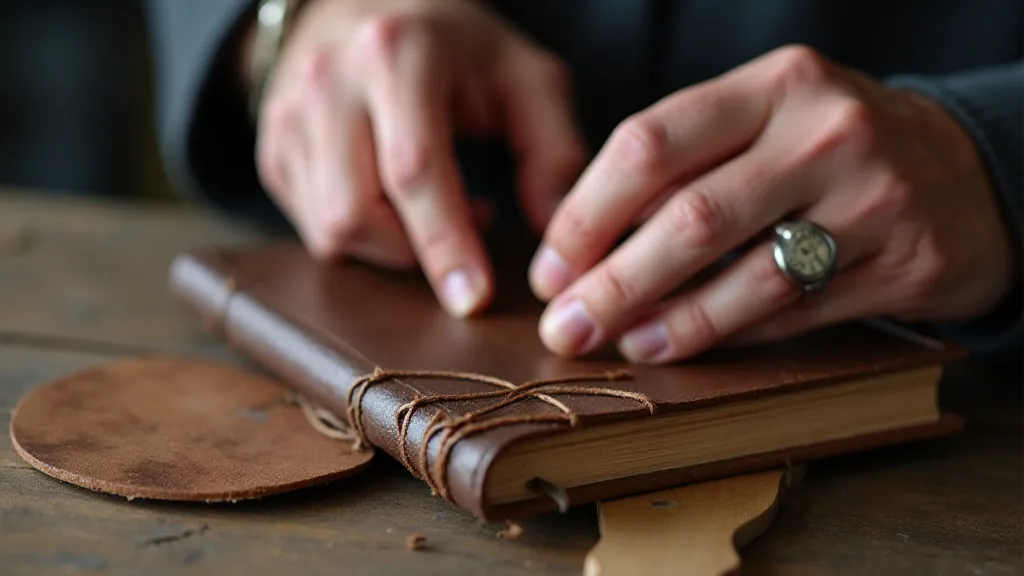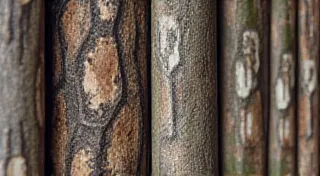The Language of Thread: Expressing Emotion Through Stitch Density and Color
There’s a particular scent that clings to old books – a mixture of aged paper, leather, and sometimes, a whisper of glue. It’s a scent that speaks of history, of countless hands turning pages, of stories held within protective covers. For me, that scent is inextricably linked to the rhythmic pulse of stitching, the deliberate dance of needle and thread that secures a book’s spine and, surprisingly, its soul. More than just a functional element, leather stitching in bookbinding is a visual language, capable of conveying subtle emotions and adding layers of depth to a seemingly simple construction.
I remember, as a child, discovering a battered accordion in my grandfather's attic. Its bellows were cracked, its keys stuck, but the leather covering it, meticulously hand-stitched, was remarkably intact. The stitching wasn't perfect – a slight irregularity here, a subtly different spacing there – but it spoke volumes about the craftsman who had made it. It wasn't just about keeping the bellows together; it was about showcasing skill, patience, and a certain pride in workmanship. That accordion became a tangible representation of history, a silent testament to a time when things were made to last.

The Historical Context: More Than Just Functionality
Historically, leather stitching wasn't merely about binding pages; it was a deliberate aesthetic choice, often dictated by the book's purpose and the patron’s desires. Medieval manuscripts, often prized possessions, featured elaborate leather bindings with intricate stitching patterns that mirrored the illuminated manuscripts within. These weren't rushed affairs; they were works of art in their own right. Consider the bindings of the Benedictine monastery of St. Gall, renowned for their opulent decorations and exquisite stitching. The density of the stitching could signify the book’s importance - a richly stitched binding implied a valuable and treasured text. During the Renaissance, a shift occurred, with a move towards simpler, more elegant designs, but the fundamental principle remained: the stitching was integral to the overall impression. The choice of leather itself played a crucial role; early binders often relied on locally sourced hides, each possessing unique characteristics that influenced the final aesthetic. The craft is a lineage, passed down through generations; understanding the historical methods employed can offer profound insights into appreciating the art and practice. The journey from raw hide to the final, beautifully bound book is a transformation that deserves to be explored in more detail; those interested in learning more about this process might find beyond moroccans reveals the fascinating breadth of leather types used throughout history, and their impact on the final binding.
Density: Whispering Strength and Softness
The density of your stitching directly impacts the visual texture and perceived weight of the spine. A tightly packed stitch pattern, like a closely woven tapestry, exudes a feeling of strength, permanence, and formality. It suggests a book meant for serious study, a tome of great importance. Think of a law book or a heavily illustrated scientific treatise – a dense stitch pattern would be entirely appropriate. Conversely, a looser, more open stitch pattern creates a feeling of lightness, delicacy, and intimacy. This is often favored for personal journals, poetry collections, or books designed to evoke a sense of quiet reflection. The space *between* the stitches becomes as important as the stitches themselves.
Experimenting with stitch density allows for a remarkable level of nuance. Varying the density along the spine can create a gradient effect, drawing the eye and adding a dynamic element to the design. Imagine a spine that is densely stitched in the center, symbolizing stability and authority, gradually loosening towards the edges, suggesting openness and accessibility. The structural considerations are paramount as well. A poorly executed binding, regardless of its aesthetic beauty, will inevitably fail. The complexities of achieving both visual appeal and structural integrity often involve a deep understanding of traditional techniques. Readers seeking further insight into the interplay of aesthetics and function may find the spine’s lament offers valuable insights into ensuring structural integrity in leather bindings.
Color: A Spectrum of Emotions
While the traditional look of leather bookbinding often relies on natural tones, don't underestimate the power of color. The color of your thread isn't just decorative; it carries emotional weight. Deep browns and blacks convey a sense of tradition, solemnity, and gravitas. They are the colors of ancient libraries and scholarly pursuits. Warm colors like yellows and oranges evoke feelings of joy, optimism, and creativity, suitable for a children’s book or a sketchbook.
Consider using contrasting thread colors to highlight specific areas of the spine or to create a visual pattern. A dark brown thread against a lighter tan leather creates a subtle but impactful contrast. The juxtaposition of colors can also tell a story – perhaps a thread of crimson running through a spine of deep brown to symbolize passion or a hidden narrative. The materials involved in bookbinding represent a fascinating transformation, a metamorphosis from raw elements to a vessel of knowledge and artistry. The alchemical nature of this process, where simple ingredients are combined to create something enduring and beautiful, is a subject that merits further exploration; for a deeper understanding of the craft, one might examine the alchemist’s touch for a deeper understanding of the craft.
Beyond the Basics: Exploring Historical Methods
Delving into historical bookbinding methods reveals a wealth of knowledge about stitching techniques and the philosophies behind them. The "French Pegged" binding, for example, relies on tiny leather pegs inserted into the spine to provide extra support – a testament to the importance of longevity and durability. These pegs subtly impact the visual texture of the spine, creating a unique pattern that speaks to the book’s enduring quality.

Similarly, exploring the “Coptic” binding, with its exposed spine and distinctive chain-stitching pattern, provides insights into early bookmaking techniques and the aesthetics of simplicity and functionality. These methods, passed down through generations, offer invaluable lessons in craftsmanship and design. The importance of responsible sourcing in the crafting of these enduring works cannot be overstated; the journey from the animal to the finished binding involves a chain of decisions that impact both the aesthetic and the ethical dimensions of the craft. To learn more about these critical considerations, readers are encouraged to examine from hide to heritage sheds light on ethical sourcing in contemporary leather bookbinding.
A Practical Guide: Parchment Paper and Thread Selection
For those new to leather stitching, working with parchment paper can be an excellent way to practice your technique before committing to leather. Parchment offers a similar texture and feel, allowing you to experiment with different stitch patterns and thread colors without the expense of leather. When selecting thread, consider the weight and material. Linen thread is a traditional choice, known for its strength and durability. Waxed linen is particularly useful, as the wax helps to prevent tangling and provides a smoother stitching experience.
The Joy of Imperfection and Personal Expression
Ultimately, the beauty of leather stitching lies in its inherent imperfection. Each stitch is a unique mark, a testament to the human hand that created it. Embrace the slight irregularities, the subtle variations in spacing – these are what give your bookbinding its character and soul.

Like my grandfather’s accordion, a book bound with care and attention speaks volumes about the maker’s dedication and passion. It is more than just a vessel for words; it is a work of art, a testament to the enduring power of human craftsmanship and the beautiful language spoken through the density and color of thread. The art of creating something truly lasting and beautiful often involves more than simply following a set of instructions; it requires a deep connection to the materials and a willingness to embrace the unexpected. The craftspeople who dedicate themselves to this art form are keepers of a rich tradition, passing down their knowledge and skills through generations. This continuity of practice is a vital source of inspiration for those seeking to learn and create.





